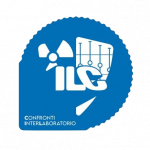
A common mistake is forgetting to adjust the final year’s depreciation to not drop below the salvage value. Sign up to receive more well-researched small business articles and topics in your inbox, personalized for you. Ask a question about your financial situation providing as much detail as possible. Our goal is to deliver the most understandable and comprehensive explanations of financial topics using simple writing complemented by helpful bookkeeping graphics and animation videos. 11 Financial is a registered investment adviser located in Lufkin, Texas. 11 Financial may only transact business in those states in which it is registered, or qualifies for an exemption or exclusion from registration requirements.
- At the beginning of the second year, the fixture’s book value will be $80,000, which is the cost of $100,000 minus the accumulated depreciation of $20,000.
- That is less than the $5,000 salvage value determined at the beginning of the asset’s useful life.
- We take monthly bookkeeping off your plate and deliver you your financial statements by the 15th or 20th of each month.
- Accountingo.org aims to provide the best accounting and finance education for students, professionals, teachers, and business owners.
- However, many firms use a rate equal to 1.5 times the straight-line rate.
Partial Year’s Depreciation FAQs

For instance, if an asset’s straight-line rate is 10%, the DDB rate would be 20%. This accelerated rate reflects the asset’s more rapid loss of value in the early years. By dividing the $4 million depreciation expense by the purchase cost, the implied depreciation rate is 18.0% per year. Sara wants to know the amounts of depreciation expense and asset value she needs to show in her financial statements prepared on 31 December each year if the double-declining method is used.
Pros of the Double Declining Balance Method
Accelerated depreciation techniques charge a higher amount of depreciation in the earlier years of an asset’s life. One way of accelerating the depreciation expense is the double decline depreciation method. In summary, understanding double declining balance depreciation is crucial for making informed financial decisions.
What is Double Declining Balance Depreciation?

First, determine the asset’s initial cost, its estimated salvage value at the end of its useful life, double declining balance method and its useful life span. Then, calculate the straight-line depreciation rate and double it to find the DDB rate. Multiply this rate by the asset’s book value at the beginning of each year to find that year’s depreciation expense. Double Declining Balance (DDB) depreciation is a method of accelerated depreciation that allows for greater depreciation expenses in the initial years of an asset’s life. Double declining balance depreciation is an accelerated depreciation method that charges twice the rate of straight-line deprecation on the asset’s carrying value at the start of each accounting period.

- The theory is that certain assets experience most of their usage, and lose most of their value, shortly after being acquired rather than evenly over a longer period of time.
- The balance of the book value is eventually reduced to the asset’s salvage value after the last depreciation period.
- If the double-declining depreciation rate is 40%, the straight-line rate of depreciation shall be its half, i.e., 20%.
- In this comprehensive guide, we will explore the Double Declining Balance Method, its formula, examples, applications, and its comparison with other depreciation methods.
- Per guidance from management, the PP&E will have a useful life of 5 years and a salvage value of $4 million.
- What it paid to acquire the asset — to some ultimate salvage value over a set period of years (considered the useful life of the asset).
DDB depreciation is less advantageous when a business owner wants to spread out the tax benefits of depreciation over a product’s useful life. This is preferable for businesses that may not be profitable yet and, therefore, may be unable to capitalize on greater depreciation write-offs or businesses that turn equipment assets over quickly. In contrast to straight-line depreciation, DDB depreciation is highest in the first year and then decreases over subsequent years. This makes it ideal for assets that typically lose the most value during the first years of ownership. Unlike other depreciation methods, it’s not too challenging to implement. Given its nature, the DDB depreciation method is best reserved for assets that depreciate rapidly in the first several years of ownership, such as cars and heavy equipment.
However, it may also apply to business assets like computers, mobile devices and other electronics. Due to the accelerated depreciation expense, a company’s profits don’t represent the actual results because the depreciation has lowered its net income. To calculate the depreciation rate for the DDB method, typically, you double the straight-line depreciation rate.

Ask Any Financial Question
Under the half-year convention, a half-year’s depreciation is charged to the year of acquisition. With Taxfyle, https://www.bookstime.com/ your firm can access licensed CPAs and EAs who can prepare and review tax returns for your clients. When you use Taxfyle, you’re guaranteed an affordable, licensed Professional. Taxfyle connects you to a licensed CPA or EA who can take time-consuming bookkeeping work off your hands. Taxes are incredibly complex, so we may not have been able to answer your question in the article.
- This method results in a larger depreciation expense in the early years and gradually smaller expenses as the asset ages.
- The magic happens when our intuitive software and real, human support come together.
- This means that compared to the straight-line method, the depreciation expense will be faster in the early years of the asset’s life but slower in the later years.
- The amount of final year depreciation will equal the difference between the book value of the laptop at the start of the accounting period ($218.75) and the asset’s salvage value ($200).
- In that year, the depreciation amount will be the difference between the asset’s book value at the beginning of the year and its final salvage value (usually a small remainder).
So, if an asset cost $1,000, you might write off $100 every year for 10 years. Aside from DDB, sum-of-the-years digits and MACRS are other examples of accelerated depreciation methods. They also report higher depreciation in earlier years and lower depreciation in later years.
